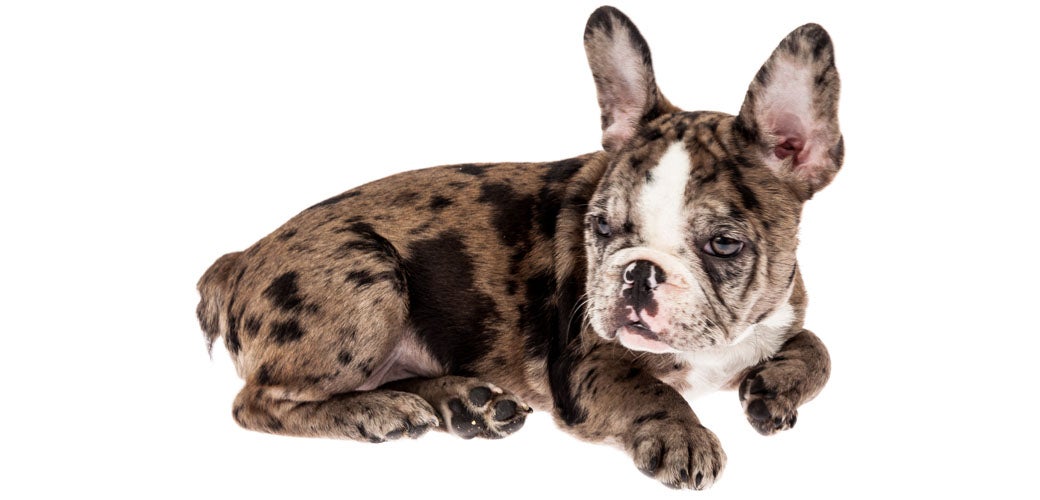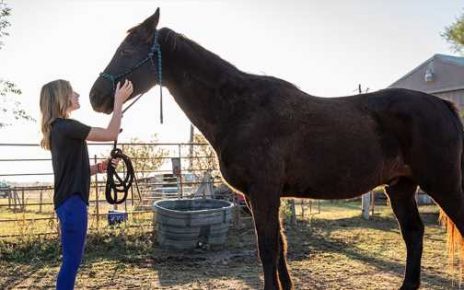

“Rare” or “exotic” puppies with unusually patterned or colored coats may seem enticing—but these striking and unusual qualities could signal a problem.
Considering buying a dog who is “unusual,” “exotic” or “rare?” It’s critical that you dig deeper into where the puppy came from by researching the breeder and their breeding program. While puppies can be born with all sorts of colors and patterns, irresponsible “breeders” prioritize producing these specific colors—even at the expense of the dog’s health and welfare. These colors should raise red flags for you—here’s what to consider if you are seeking out this type of puppy.
Merle
A merle (also called “dapple”) pattern is an inherited trait that produces patches of light and dark pigment within the coat. The merle gene can also produce blue eyes or pink noses and paw pads in dogs where those characteristics would typically be dark. The merle pattern has historically been seen in breeds such as Australian Shepherds, Dachshunds and Great Danes; however, it has also recently started appearing in breeds where the color pattern is not common, such as Corgis and French Bulldogs.
Merle puppies are born when a merle dog mates with a non-merle dog or from the mating of two merle dogs. Puppies born from two merle parents may be born deaf or with abnormal and possibly nonfunctioning eyes. This “rare” coloring may signal a puppy with severe medical issues such as deafness, eye defects, and/or compromised immune systems.
So why would a responsible breeder mate two merle dogs? They don’t. Breeders who don’t carefully plan their breeding might not even know these risks. They might not do any genetic testing or may not know the genetic history of their breeding dogs—or worse, they may believe they can make more money on a rare white puppy.
Blue or Lilac
Blue or lilac coats, which often look silvery or deep gray, result from inheritance of a recessive gene for coat color. It can be associated with a condition known as “color dilution alopecia.” This results in hair loss from dilute-colored areas. At birth, puppies with color dilution alopecia have normally textured coats, but then hair loss begins as early as 6 months of age. These dogs often have exposed patches of skin that would normally be protected by their hair. This skin can become scaly and itch. Unfortunately, there is no cure for this, but medication can help relieve some of the symptoms.
Beware of Bad Breeders
Can you spot a double merle? Maybe. Can your lilac Frenchie or Corgi be perfectly healthy? Sure. But even if your puppy won the genetic lottery and escaped having one of these ailments, you shouldn’t support a breeder who purposely sacrifices the health, safety and welfare of many puppies in order to breed puppies with the “perfect color.”
If the puppy you want is being sold in a pet store or available to be shipped to you at the click of a button, there is a high likelihood that your dog came from a place that prioritized quick profits over the welfare of the dogs in their care—no matter what color they are. Do not believe any seller that tells you a “super experienced” breeder, specializing in breeding “exotic” colored dogs, wants to sell their precious puppies to someone they have never met.
If you are committed to buying a puppy, please visit the breeder in person, meet the mom and ask about their breeding program and genetic testing protocols.
Avoid cruelty and protect dogs who are barred from love by signing up for the ASPCA’s Advocacy Brigade.
Source: Read Full Article



